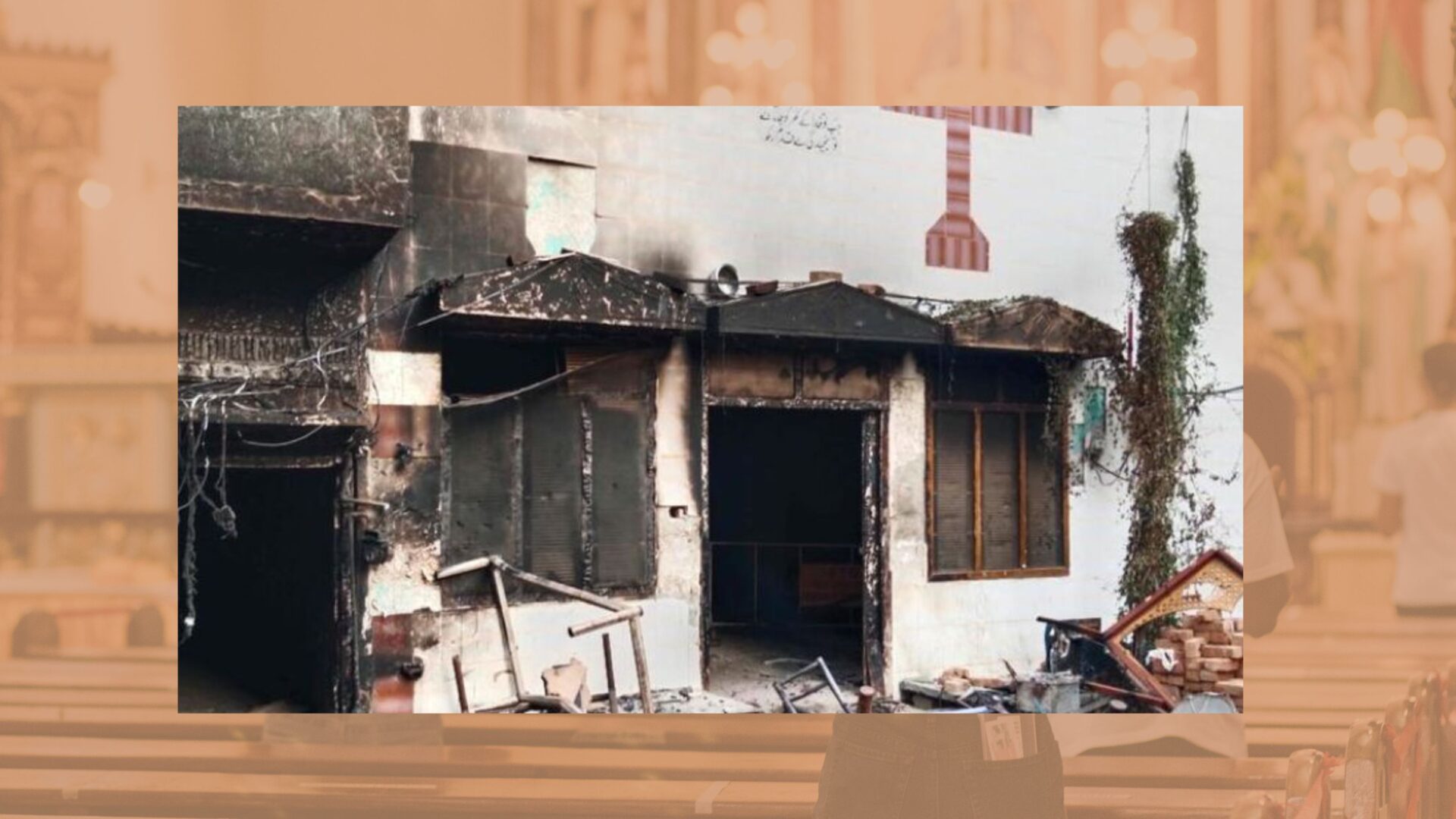
Jaranwala incident 2023 – Equal ‘Rights Or RIOTS’ for Minorities?

Lala Chaman Lal
I am a passionate human rights advocate working to protect and empower marginalized communities.
“In Jaranwala, the smoke of burned churches still lingers in the air, like unanswered prayers rising into the sky. The cross was not just set on fire, it was humiliated before a nation that calls itself the guardian of faith.”
Today, just two years back, on the 16th of August 2023, Jaranwala burned. Under the shadow of a loudspeaker, a mob rose from a false whisper of blasphemy. Within hours, homes, churches, schools, even graveyards—everything sacred to Christians—were devoured by flames. Sources suggest that no life was taken that day, yet an entire community was made to feel as though its very existence had no worth.
On a quiet Wednesday morning, the Christian community in Jaranwala did not run for office or work, but for their lives, to protect their sisters, daughters and brothers. It began with an accusation—two Christian men were blamed for desecrating the Qur’an. The claim spread not through evidence, but through echo, amplified by mosque loudspeakers that turned suspicion into a summons. Words became weapons, and before the sun could set, thousands had gathered. The crowd swelled with anger, guided less by truth and more by the word of the local moulana, as if he alone held the power to define good and evil.
The caretakers of the Law, Police and the other intelligence agencies, well-aware of what was about to happen, didn’t care to interfere, instead surrendering against a mob of fanatics—standing still, almost as if silence itself was part of the plan.
The mob did not stop at words. They marched through Christian colonies, armed with sticks, stones, and fire. One by one, churches cried with fire—twenty-six in a single day—each flame rising like a signal that law had collapsed. Homes were looted, their walls ripped apart for anything of value before being swallowed by fire. Even schools and graveyards were not spared, as if the goal was not only to destroy the present but to erase the memory of people. The smoke of burning crosses mixed with the silence of those who should have stood guard, and in that silence, the message was clear: in Jaranwala, Christians were left alone against the fury of thousands.
Reports confirm that at least 26 churches were set on fire, alongside dozens of smaller chapels, while more than 80 Christian homes were looted and burned. Thousands of Christians fled into fields and villages, spending the night without shelter. Even schools and graveyards were attacked, making it clear that the violence was aimed not just at property but at erasing the very presence of a community.
The scale of destruction raised haunting questions—could this really have been a “sudden” eruption? Eyewitnesses reported trucks arriving with fuel, coordinated groups moving from one colony to the next, and chants echoing like rehearsed lines. Human rights observers noted that the violence appeared funded, pre-planned, and organized, not just by rage but by intent. This was not a mob losing control; it was a mob executing a plan, one that seemed to thrive under the shadow of silence from those in power.
What happened in Jaranwala was not the first time faith was turned into fuel for fire. The script has been played before, only with different names and towns. In Joseph Colony, Lahore (2013), a false blasphemy
accusation led to more than a hundred Christian homes being reduced to ashes in a single night. In Shanti Nagar (1997), entire Christian neighborhoods were torched after rumors of desecration spread. For Hindus, the story reads no differently—Ghotki (2019) saw a mob, spurred by a false charge against a Hindu school principal, ransack temples and homes. In Bhong, Rahim Yar Khan (2021), an eight-year-old Hindu boy was accused of blasphemy; within hours, an enraged mob stormed and desecrated a Hindu temple. Each of these episodes followed the same pattern: a whisper of accusation, amplified from loudspeakers; mobs arriving as if on cue; and the guardians of law standing idle. Together, they reveal that Jaranwala was not an isolated wound but part of a long, painful history where non-Muslims are made to live as if their safety depends not on justice, but on silence.
These echoes of the past made Jaranwala feel tragically familiar—but what followed after the smoke cleared showed that nothing had changed. In the days after the attack, Christians returned to find the ashes of their 26 burned churches and the rubble of more than 80 looted and torched homes.
The government announced Rs 2 million in relief funds per affected family and promised justice, but the promises felt hollow against the scale of loss.
FIRs were lodged against “Na-Maloom Afraad(unknown persons),” while videos of thousands in the mob—many carrying TLP flags and chanting its slogans— circulated openly on social media. Police claimed over 500 arrests, but many suspects were quickly released, and those truly responsible—those who planned, financed, or incited the violence—remained untouched.
Instead of real justice, what came was an attempt to calm the anger without solving the problem. Officials showed up with cameras, some families got compensation while others were ignored, and the story quickly turned into one about keeping “peace” rather than punishing those who caused the violence. For the victims, the silence of the law—and the refusal to confront groups like TLP—was louder than the chants of the mob. It left them with a bitter truth: their suffering would not bring change.
While the world watched in shock, the local authorities chose silence. The Punjab government restricted its role to press conferences, photo-ops, and uneven relief distribution, avoiding tough questions about why the police stood idle for hours. Promises of accountability were repeated, but real action never followed—leaving Christians to rebuild their lives alone.
● Catholic Church of Pakistan said “The government’s response was a mockery of justice, shifting the burden on victims while sparing those who incited the mobs.”
https://www.ucanews.com/news/pakistan-church-slams-govts-jaranwala-attack-response/103503
● Human Rights Commission of Pakistan (HRCP) reported police “failed in both anticipation and response,” with a 10-hour delay before Rangers arrived.
https://www.dawn.com/news/1772159
● Amnesty International noted that “over 90% of suspects remain free, trials have stalled, and nearly 40% of families still await compensation”
https://www.amnesty.org/en/latest/news/2024/08/pakistan-one-year-since-jaranwala-attack-minority-christians-await-justice/
● The US State Department urged “Pakistani authorities to hold accountable those responsible for attacks on churches and homes and to protect the fundamental right of religious freedom for all”
https://en.wikipedia.org/wiki/Jaranwala_church_arsons
“Two years on, as we stand here today, the ashes of Jaranwala have not cooled —they have only been buried under silence. The promises of justice never translated into accountability, the pain of the victims remains unhealed, and the same patterns of denial and appeasement continue. As we stand today, remembering the smoke, the chants, and the shattered walls of 26 churches, we are forced to confront a darker truth:
“if history keeps repeating, then what has really changed?” in a country where Quaid-e-Azam himself promised freedom of faith, how much longer will Pakistan’s Hindus and Christians be forced to live in fear instead of the equality they were guaranteed?”

